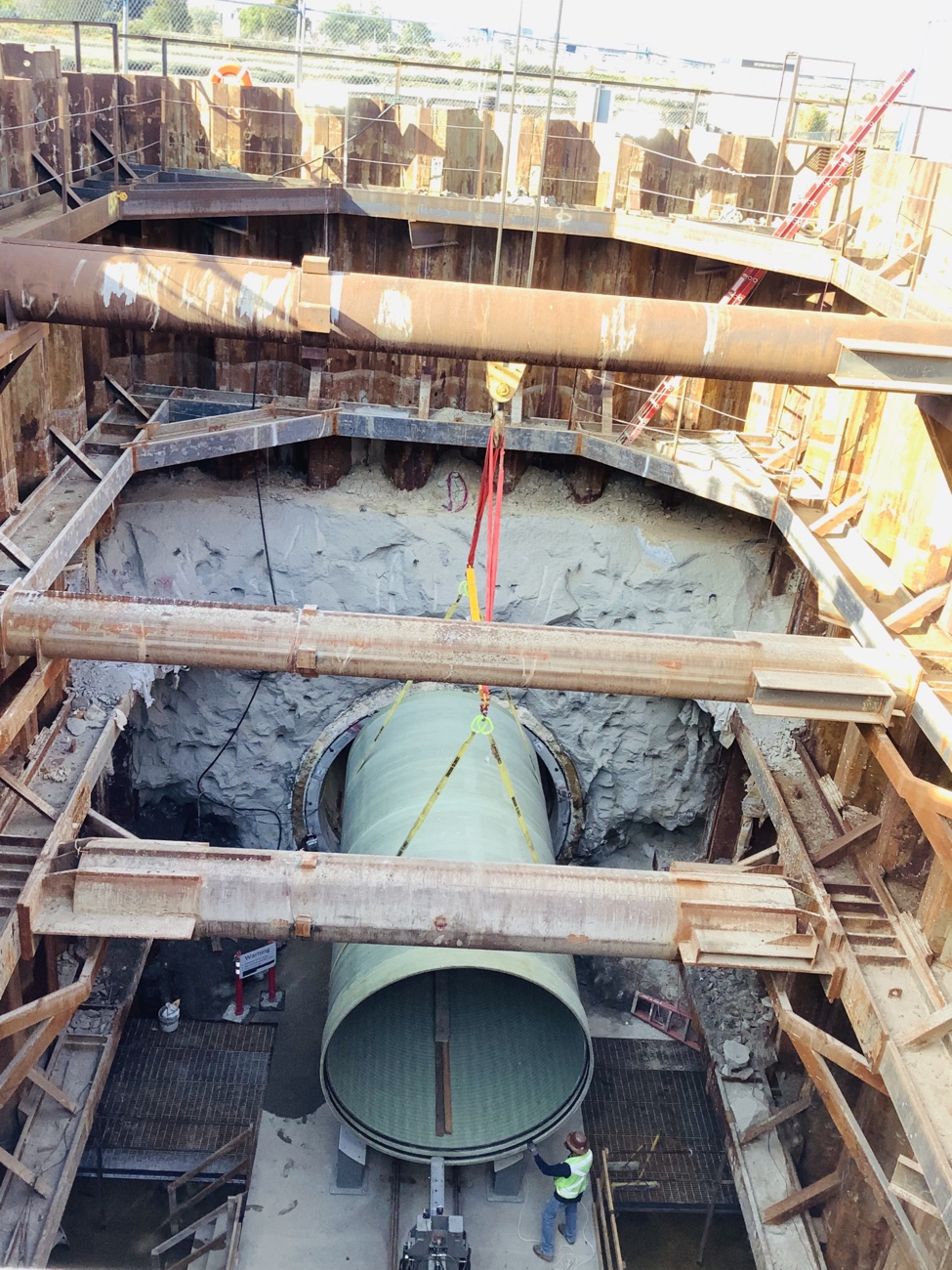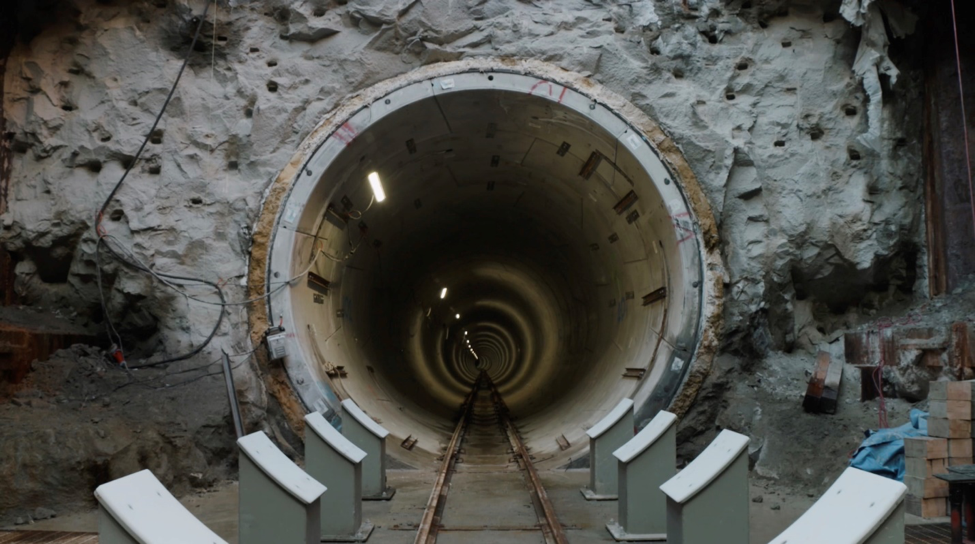Gravity Pipeline
Connection System
SVCW’s contractor partner, Barnard-Bessac Joint Venture (BBJV), installed the excavation support system, or secant piles, for the vertical access shaft being constructed at the San Carlos Pump Station. This vertical shaft will be used to build the connecting structure between receiving the raw wastewater flows from the Cities of Belmont and San Carlos to the Gravity Pipeline, and then carried to the wastewater treatment plant. Creating a ring, 24 secant piles were installed. This allows BBJV to excavate soil from within the enclosed secant piles to build a vertical shaft, which will be about 50 feet deep.

Tunnel Boring Machine
Salus continues to be on target for its alignment and tunneling schedule during its current, second drive. BBJV and SVCW continuously monitor tunneling activities, and teams review proactive measures to ensure that tunneling operations are conducted safely.
In the tunnel that Salus dug during her first drive, BBJV is installing the first segments of the Fiberglass Reinforced Polymer (FRP) pipe. This pipe will ultimately carry the raw wastewater to the SVCW plant. A custom designed pipe transporter was commissioned at the Bair Island site to operate inside the tunnel. It will transport 20-foot long, 13,000 pound FRP pipe segments that will connect with fabricated joints to other pipe segments in a sequential process within the tunnel.
BBJV installed cradles that act as supports for the pipe to prepare the shaft for receiving pipe segments as they’re lowered into the shaft. The pipe segments are supported in the tunnel during construction with metal jacks around each FRP segment. Wooden cradle pieces are used as temporary supports under each segment prior to placing the final grout that will fill the space between the pipe and concrete tunnel walls. The grout will only be added after the FRP pipe is placed and secured throughout the entire length of the tunnel. Adding the grout will create a unified system of concrete segments and FRP carrier pipe that will be resilient during seismic activities. The tunnel will have the durability of a 100-year service life, which is a primary design criteria for the RESCU Program.
Connections between the pipe segments are custom designed with gaskets that provide a water tight seal. The connection joints are then tested with controlled air pressure to ensure that the pipe joints are tight and meet the design specifications for long-term performance.

